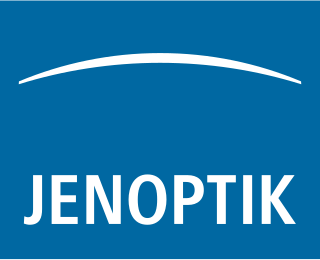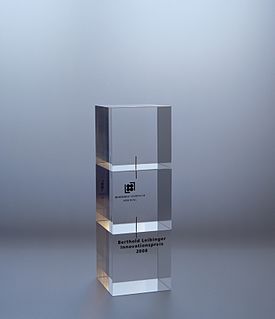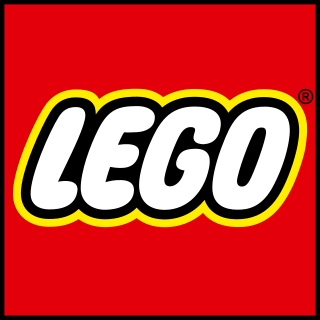History
In 1949 Karl Leister founded Karl Leister Elektro-Geraetebeau in Solingen, Germany. The Leister FIX W200 hand-held vacuum cleaner was the first product. A few years later, Karl Leister invented the Leister KOMBI, a hot air unit for welding thermoplastic synthetic materials. He opened the first factory in Solingen.
The sales network has been expanded continuously since 1953. In 1963, the first branch was opened in Kägiswil with four employees. The process heat product line encompassing air heaters and blowers was developed a short time later. The existing location was expanded. All business activities were relocated to Switzerland in 1977. In-house motor fabrication was set up in 1979.
Leister expanded its production capacities and developed a global sales network. In the 1980s Leister was already active in Europe, Asia and Latin America. After the death of Karl Leister, his wife Christiane Leister took over management of Leister Process Technologies in 1993. The company began expanding into additional business areas in the 1990s. A product line for laser systems was introduced and activities in the fields of gas sensors and micro-optics commenced. The latter were later outsourced to the subsidiary Axetris. A clean room was set up for this in 1999.
The headquarters were relocated to Galileo-Strasse in Kägiswil in 2008.
In 2011 the company Leister Process Technologies (with the Leister and Axetris business areas) and the Leister companies abroad were integrated into a group structure. Leister AG is the holding company of the new Leister Group.
Seamtek LLC, USA, was acquired in 2014 to develop the market for film welding. While Leister only carried automatic welders previous to this, it entered the stationary welding machine segment with the takeover of Seamtek.
Organization and business data
Leister AG has been the holding company of the Leister Group with its headquarters in Kägiswil, Obwalden, Switzerland since 2011. The group includes the following companies:
- Leister Technologies AG
- Axetris AG
- Ascent GmbH
- Leister Technologies LLC USA
- Leister Technologies Benelux B.V.
- Leister Technologies Deutschland GmbH
- Leister Technologies Italia srl.
- Leister Technologies China Ltd.
- Leister Technologies India Pvt Ltd.
- Leister Technologies KK Japan
The Swiss companies are engaged mainly in research and production. Leister Technologies AG with its business areas of plastic welding, process heat (since 1967) and laser plastic welding (since 1998) forms the company’s original core. It produces equipment for welding thermoplastic synthetic materials, hot air modules for industrial process heat and laser plastic welding systems.
Axetris AG is active in the fields of gas sensors and micro-optics. Activities in this segment began in 1998; Axetris has been an independent company within the group since 2011. Its registered office is Kägiswil. Ascent GmbH is also among the Leister Group’s Swiss companies. The seven international branches focus on the sale of Leister products and services. There are branches in Aachen (Germany, since 1999), Itasca (USA, since 2000), Shanghai (China, since 2004), Chennai (India, since 2007), Osaka (Japan, since 2011), Houten (the Netherlands, since 2012), and Milan (Italy, since 2013).

Welding is a fabrication or sculptural process that joins materials, usually metals or thermoplastics, by using high heat to melt the parts together and allowing them to cool causing fusion. Welding is distinct from lower temperature metal-joining techniques such as brazing and soldering, which do not melt the base metal.

Photonics is the physical science of light (photon) generation, detection, and manipulation through emission, transmission, modulation, signal processing, switching, amplification, and sensing. Though covering all light's technical applications over the whole spectrum, most photonic applications are in the range of visible and near-infrared light. The term photonics developed as an outgrowth of the first practical semiconductor light emitters invented in the early 1960s and optical fibers developed in the 1970s.

Plastic welding is welding for semi-finished plastic materials, and is described in ISO 472 as a process of uniting softened surfaces of materials, generally with the aid of heat. Welding of thermoplastics is accomplished in three sequential stages, namely surface preparation, application of heat and pressure, and cooling. Numerous welding methods have been developed for the joining of semi-finished plastic materials. Based on the mechanism of heat generation at the welding interface, welding methods for thermoplastics can be classified as external and internal heating methods, as shown in Fig 1.
Rheinmetall AG is a European defence contractor. Rheinmetall has a presence in two corporate sectors with six divisions, and is headquartered in Düsseldorf, Germany. In fiscal 2018, the company generated sales of €6.148 billion.

Carl Paul Gottfried Linde was a German scientist, engineer, and businessman. He discovered a refrigeration cycle and invented the first industrial-scale air separation and gas liquefaction processes. These breakthroughs laid the backbone for the 1913 Nobel Prize in Physics that was awarded to Heike Kamerlingh Onnes. Linde was a member of scientific and engineering associations, including being on the board of trustees of the Physikalisch-Technische Reichsanstalt and the Bavarian Academy of Sciences and Humanities. Linde was also the founder of what is now known as Linde plc, the world's largest industrial gases company, and ushered the creation of the supply chain of industrial gases as a profitable line of businesses. He was knighted in 1897 as Ritter von Linde. Carl von Linde invented the first reliable and efficient compressed-ammonia refrigerator in 1876.

Laser beam welding (LBW) is a welding technique used to join pieces of metal or thermoplastics through the use of a laser. The beam provides a concentrated heat source, allowing for narrow, deep welds and high welding rates. The process is frequently used in high volume applications using automation, as in the automotive industry. It is based on keyhole or penetration mode welding.

A heat sealer is a machine used to seal products, packaging, and other thermoplastic materials using heat. This can be with uniform thermoplastic monolayers or with materials having several layers, at least one being thermoplastic. Heat sealing can join two similar materials together or can join dissimilar materials, one of which has a thermoplastic layer.
KUKA is a German manufacturer of industrial robots and solutions for factory automation. It is owned by the Chinese company Midea Group.

Drägerwerk AG is a German company based in Lübeck which makes breathing and protection equipment, gas detection and analysis systems, and noninvasive patient monitoring technologies. Customers include hospitals, fire departments and diving companies.
ams AG, formerly known as austriamicrosystems AG and still known as AMS, designs and manufactures advanced sensor solutions for applications requiring small form factor, low power, highest sensitivity and multi-sensor integration. Products include sensors, sensor ICs, interfaces and related software for mobile, consumer, communications, industrial, medical, and automotive markets. Headquartered in Austria, ams employs over 9,000 people globally. ams is listed on the SIX Swiss stock exchange.

Jenoptik is a German integrated photonics group that divides its activities into three photonics-based divisions Light & Optics, Light & Production and Light & Safety.
Ophir Optronics Solutions is a multinational company which sells optronics solutions. The company develops, manufactures and markets infrared (IR) optics and laser measurement equipment. Founded in 1976, the company was traded on the Tel Aviv Stock Exchange from 1991 until it was acquired, and was a constituent of its Tel-tech index. Headquartered in the Har Hotzvim industrial park in Jerusalem, Israel Ophir owns a 100,000-square-foot (9,300 m2) complex that includes the group's main production plant. Ophir has additional production plants in North Andover, Massachusetts and Logan, Utah in the US and sales offices in the US, Japan and Europe. In 2006, Ophir acquired Spiricon Group, a US-based company in the beam-profiling market. Ophir's sales increased sharply from $45 million in 2005 to $74 million in 2007. During 2007, Ophir established a Swiss-based subsidiary to market lenses and components for surveillance and imaging systems in Europe. In May 2010, Ophir acquired Photon Inc., another US-based beam-profiling company. Newport Corporation, a global supplier in photonics solutions, completed its acquisition of Ophir in October 2011.
Schleuniger is a technology company and a supplier to the wire processing industry. With its subsidiary DiIT, Schleuniger is in involved in digitalization and industrial IoT.

The Berthold Leibinger Innovationspreis is an award for given to those who have created applied laser technology and innovations on the application or generation of laser light. It is open to participants worldwide. It is biennially awarded by the German non-profit foundation Berthold Leibinger Stiftung. Three prizes are awarded worth 100,000 euros. The prize winners are selected from eight finalists that present their work person in a jury session. The jury is composed of international experts from different fields.

SÜSS MicroTec SE is a supplier of equipment and process solutions for the semiconductor industry and related markets. The microstructuring systems like photolithography tools are used for manufacturing of processors, memory chips, MEMS, LED and other micro system devices.
Welwyn Tool Group Limited, is a tool distribution company based in Welwyn Garden City, Hertfordshire, United Kingdom. The company is responsible for the distribution and after-sales service of products manufactured by Swiss company, Leister Technologies in The United Kingdom and Ireland.
Amada Miyachi America, a subsidiary of Amada Miyachi Co., Ltd, designs and manufactures equipment and systems for resistance welding, laser welding, laser marking, laser cutting, laser micro machining, hermetic sealing, micro tig welding, and hot bar reflow soldering and bonding. Established in 1948, Amada Miyachi America is headquartered in Monrovia, California, US. The company’s equipment is used in numerous industries, chief among which are medical, aerospace, automotive, batteries, and electronic components. Amada Miyachi America has approximately 200 employees, with 7 sales and manufacturing offices serving about 11,000 customers worldwide. More than 80,000 items are manufactured annually. The company is certified to ISO 9001:2015, China Compulsory Certificate (CCC), European Conformity (CE), and Canadian Standards Association (CSA) quality certifications.

Lego Produktions AG Schweiz was a major production facility in Baar, Switzerland for the Lego toy company, from 1974 to 2004. At the time its closing was announced in 2001, 30% of the world production of Lego was produced at the Baar facility. The Baar facility eventually closed in 2004 and Lego's remaining Swiss production facilities closed in 2005.
IR welding is a welding technique that uses a non-contact heating method to melt and fuse thermoplastic parts together using the energy from infrared radiation. The process was first developed in the late 1900s, but due to the high capital cost of IR equipment the process was not commonly applied in industry until prices dropped in the 1990s. IR welding typically uses a range of wavelengths from 800 to 11,000 nm on the electromagnetic spectrum to heat, melt, and fuse the interface between two plastic parts through the absorption and conversion of the IR energy into heat. Laser welding is a similar joining process that applies IR radiation at a single wavelength.










